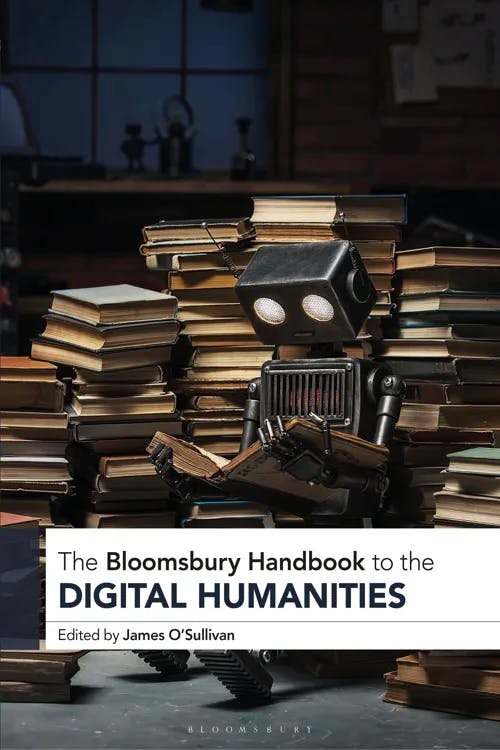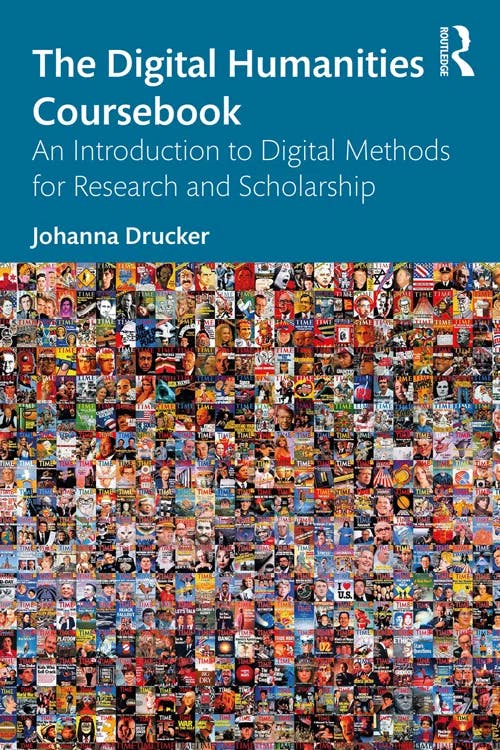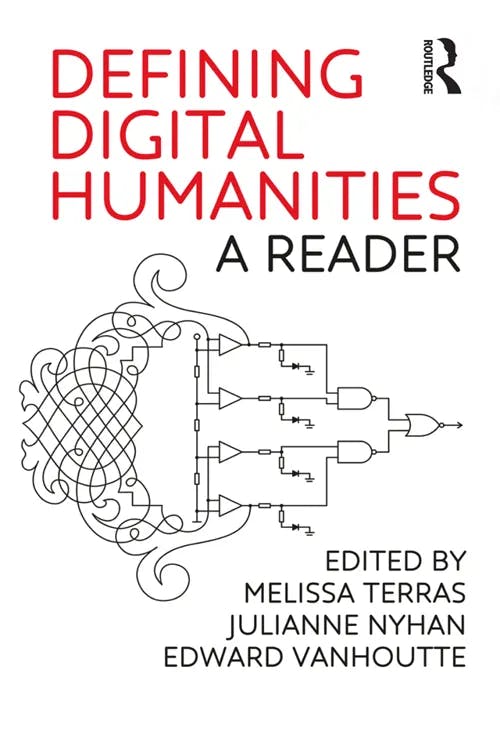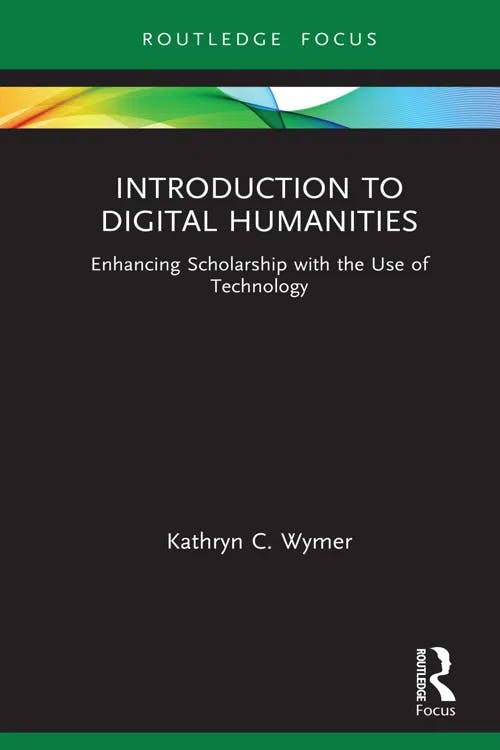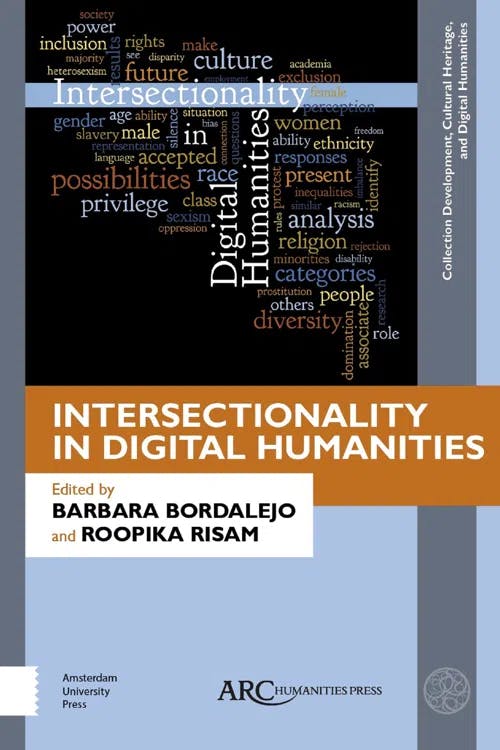What are the Digital Humanities?
MSt, Women's, Gender & Sexuality Studies (University of Oxford)
Date Published: 26.09.2023,
Last Updated: 23.01.2024
Share this article
Defining digital humanities
Digital humanities (or DH) is an interdisciplinary field of research at the intersection of the humanities and computational methods/information technologies. Generally, scholars engaging with digital humanities use the powers of computational systems to approach humanistic inquiry in new ways. In other words, digital humanities work applies quantitative methods to qualitative research.
Defining digital humanities is a tricky task — as exemplified by Defining Digital Humanities (2016), a reader of essays, articles, and blog posts trying to define the term. Writing in 2010, Matthew Kirschenbaum found that essays asking “What is digital humanities?” were “already genre pieces” (“What Is Digital Humanities and What’s It Doing in English Departments?,” in Defining Digital Humanities, 2016). Even whether “digital humanities” is singular or plural is still up for debate (“digital humanities is…” vs. “the digital humanities are…”). As such, the possibilities for and purpose of digital humanities are still being explored.
In The Bloomsbury Handbook to the Digital Humanities (2022), James O’Sullivan writes that “digital humanities” is a “charged term,” and “even some of its advocates have grown weary of the ‘what is/are DH?’ debate.” However, O’Sullivan argues that we must continue defining DH:
If we are going to invest public funds in DH, if we are going to research and teach it; if we are going to re-design cultural spaces so that they better incorporate digital ways of representation, and if we are going to at least attempt to reclaim some “cultural authority” (Drucker 2012) from those who build the tools and technologies on which we have become utterly reliant, then we need to at least talk about DH. And then we need to talk about DH again, and again. (2022)
Edited by James O'Sullivan
If we are going to invest public funds in DH, if we are going to research and teach it; if we are going to re-design cultural spaces so that they better incorporate digital ways of representation, and if we are going to at least attempt to reclaim some “cultural authority” (Drucker 2012) from those who build the tools and technologies on which we have become utterly reliant, then we need to at least talk about DH. And then we need to talk about DH again, and again. (2022)
In The Digital Humanities Coursebook (2021), Johanna Drucker provides a practical definition of digital humanities, focusing on the “intersection of computational methods and humanities materials.” Drucker describes the components of digital humanities work as “MATERIALS + PROCESSING + PRESENTATION”:
In this formulation, digital humanities projects begin with materials (images, texts, maps, three-dimensional models, sound and media files, or any combination of these) that are central to the research project. These materials are subject to computational processing (data mining or statistical analysis). The outcomes are organized in a presentation that may be web-based or offline, depending on the needs and goals of the project. (2021)
Johanna Drucker
In this formulation, digital humanities projects begin with materials (images, texts, maps, three-dimensional models, sound and media files, or any combination of these) that are central to the research project. These materials are subject to computational processing (data mining or statistical analysis). The outcomes are organized in a presentation that may be web-based or offline, depending on the needs and goals of the project. (2021)
From this formulation, we can imagine many kinds of digital humanities work. Examples of digital humanities projects include creating a digitized, searchable archive of materials; mapping the location of a historical event using 3-D modeling; and running a text analysis program to determine the frequency of certain terms of interest. Examples of archival projects include the Shakespeare and Company Project and Pacific and Regional Archive for Digital Sources in Endangered Cultures (PARADISEC). Examples of mapping projects include an animated map of the Atlantic slave trade, ORBIS: The Stanford Geospatial Network Model of the Roman World. Digital humanities projects can also use virtual reality and video game technologies, like the Virtual Harlem project (a virtual representation of Harlem, New York as it existed during the Harlem Renaissance). For more examples, hypothetical and existing, see The Digital Humanities Coursebook.
Development of the digital humanities
Digital humanities may seem to some like the latest fad, but the field actually dates back to at least the mid-twentieth century. The field’s first journal — Computers in the Humanities, now published as Language Resources and Evaluation — was established in 1966.
Digital humanities originated from what was once called “computing in the humanities” or “humanities computing.” The development of computers sparked the question of how to apply their capabilities to humanistic inquiry. Commonly considered the first digital humanities project is the work of Roberto A. Busa, who began working in the 1940s with IBM computers to develop a list of concordances in 179 works associated with St. Thomas Aquinas. The first completed version of Index Thomisticus indexed 10,631,980 words and was published throughout the 1970s in 56 printed volumes totaling over 70,000 pages.
This example illustrates a major purpose for humanities computing that continues to drive digital humanities today: computers have the capacity to analyze and organize information with far greater efficiency than humans alone. Computers significantly expand, for example, the number of texts a researcher can work on and the speed at which they can compare information across texts. In the earlier days of DH, computing was a tool for humanistic inquiry, providing the brute force for a humanities-based project.
Of course, as computers have become more capable and more accessible, the relationship between computing and the humanities has changed, and the possibilities for digital humanities have shifted. While computing was once treated as “technical support” to the “real” project of the humanities, technology is understood as transformative to the methods and questions of humanities research.
Describing digital humanities’ history, Understanding Digital Humanities (2012) by David M. Berry and Digital Humanities (2017) by Berry and Anders Fagerjord propose three waves of the field:
The first wave (1940–2001) was the era of “humanities computing” discussed above. It focused on large-scale digitization projects and building computer archives, creating technological infrastructure, and mobilizing search capabilities. The intersection of computing and linguistics was of particular interest during this period.
The second wave (2002–9) turned its attention to “born-digital” knowledge and the creation of innovative interfaces and tools. The Digital Humanities Manifesto 2.0 (2009), a creative and collaborative document assembled by Jeffrey Schnapp, Todd Presner, Peter Lunenfeld, and Johanna Drucker, describes the second wave as
qualitative, interpretive, experiential, emotive, generative in character. It harnesses digital toolkits in the service of the Humanities’ core methodological strengths: attention to complexity, medium specificity, historical context, analytical depth, critique and interpretation. (original emphasis)
While the first wave focused mainly on textual analysis and served established disciplines, the second wave worked across and between disciplines, relying on hybrid methodologies and embracing new publication models.
In the second wave, digital humanities found its current name and became a field in its own right that scholars could formally associate with. Berry and Fagerjord date the first use of the term “digital humanities” to 2001, but the name did not settle firmly until the publication of A Companion to the Digital Humanities (2004), the establishment of an initiative for the digital humanities by the National Endowment for the Humanities in 2006, and the creation of the NEH Office for the Digital Humanities in 2008. For more on the solidification of the digital humanities in its second wave, see The Emergence of the Digital Humanities (2013).
The third wave (2010–the present) welcomed a broader understanding of digital humanities as a field that could self-consciously analyze the nature of materiality and critique digital culture. This new wave is more critically reflexive, engaging the digital as both method and object of study. DH is now grappling with core questions about the purpose and methods of the humanities in a profoundly computerized age.
Approaches to digital humanities: methodologies and tools
Let’s take a closer look at digital humanities work by returning to Drucker’s formulation: MATERIALS + PROCESSING + PRESENTATION. Each stage of this process is influenced by computational methods: materials must be translated into a digital format to be computationally tractable, processing can involve a variety of computational tools, and presentation often employs online or digital platforms in order to best represent findings.
Drucker names several “fundamental activities that take the materials through processing and into presentation”:
- The process of mediation/remediation involves “either making analog materials—such as maps, manuscripts, archaeological remains, specific editions, or primary documents of historical or recent events—available in a digital format or creating and using born-digital materials” (Drucker, 2021). The transformation of information from one form to another is remediation, but even born-digital materials are highly mediated through decisions about format and interface.
- Datafication/modeling is “the work of abstracting discrete values from a phenomenon or artifact” (Drucker, 2021). Complex materials are simplified into numbers or texts for the purposes of computation.
- Information is counted, sorted, or analyzed through computer processing/analytics. While automated, these processes are still influenced by human biases that are embedded into the tool’s construction and/or the project’s research question.
- Results are shared in a presentation/display that “often takes digital form, sometimes in an online environment, as visualizations, maps, diagrams, stories, articles, or exhibits, and sometimes in analog or hybrid formats” (Drucker, 2021).
- From the initial design, sustainability/preservation must be considered, involving questions like: Where will the project take place? What resources will it require? What ecological costs will there be? Are there privacy or intellectual property issues at stake? Who will maintain the project after completion?
Considering these fundamental activities helps us envision digital humanities work, identify digital humanities projects, and potentially design our own.
Digital humanities methods are constantly evolving with technology itself. In fact, this is a major challenge for the field: digital projects quickly become outdated and technology becomes obsolete. DH faces pressing questions about how to preserve digital work, and a digital humanist must always be adapting to new tools and technologies.
However, Drucker argues that
the basic principles of digital work have become clear, codified, and standardized in ways that transfer from platform to platform over time. Specifics may change, but the construction of data, knowledge of digital formats, understanding of basic processing techniques and their output as display, and consideration of the ethical issues involved in every decision can be grasped and transferred over time. (2021)
Some specific tools for digital humanities work discussed in-depth by Drucker include:
- data modeling
- digitization (including programming and scripting languages like HTTP, HTML, CSS, and JavaScript)
- metadata, markup, and data description (including XML, TEI, KML, JSON, and other standards)
- database design
- data mining and analysis (including text analysis, cultural analytics, multi-modal communication, media, and audio mining)
- mapping and GIS
- three-dimensional and virtual modeling
For more on these methods, case studies/examples, and practical advice, see The Digital Humanities Coursebook (2021). We also recommend Doing Digital Humanities (2016), Research Methods for the Digital Humanities (2018), and Routledge International Handbook of Research Methods in Digital Humanities (2020).
Debates and challenges
Who is really a digital humanist?
As technology’s capacities increase along with its complexity and accessibility, digital humanities faces the question of what one’s skill set must be in order to be considered a digital humanist. Unlike in earlier days, DH is no longer filled with researchers writing their own code; instead, plenty of scholars trained in the humanities can use digital tools and information systems to aid their work without building or even deeply understanding those tools themselves.
Stephen Ramsay argues that digital humanities is about “building things”:
I’m willing to entertain highly expansive definitions of what it means to build something. I also think the discipline includes and should include people who theorize about building, people who design so that others might build, and those who supervise building [...]. But if you are not making anything, you are not [...] a digital humanist. You might be something else that is good and worthy [...] but if you aren't building, you are not engaged in the “methodologization” of the humanities, which, to me, is the hallmark of the discipline that was already decades old when I came to it. (“Who’s In and Who’s Out,” in Defining Digital Humanities, 2016)
Edited by Melissa Terras, Julianne Nyhan, and Edward Vanhoutte
I’m willing to entertain highly expansive definitions of what it means to build something. I also think the discipline includes and should include people who theorize about building, people who design so that others might build, and those who supervise building [...]. But if you are not making anything, you are not [...] a digital humanist. You might be something else that is good and worthy [...] but if you aren't building, you are not engaged in the “methodologization” of the humanities, which, to me, is the hallmark of the discipline that was already decades old when I came to it. (“Who’s In and Who’s Out,” in Defining Digital Humanities, 2016)
Ramsay speaks to tension in DH between those who build digital tools and those who use tools to study traditional humanities questions. This debate is expressed in a common DH saying, “less yack, more hack.” This phrase is meant to indicate that in the digital humanities, “hacking” (programming, running code, doing) is valued over “yacking” (talking, theorizing, thinking). However, some digital humanists like Alan Liu argue that the field’s lack of theory is not a strength but a gap which must be filled with more scholarship.
There is no doubt that digital tools have become an essential part of humanistic research. Even when writing a “traditional” paper, a researcher uses many digital tools including ebooks, databases, word processors, and reference management tools. Right now, you’re reading this guide in digital form; the links take you to digitized books and articles. The simple ability to search this guide or Perlego’s ebooks for a keyword is a tool that has transformed humanities research.
Does this mean that all humanists are now digital humanists? Not necessarily. Perhaps we can envision ourselves — as Lincoln Mullen does in Defining Digital Humanities — on a spectrum rather than in two camps. In addition, we can understand digital humanists as not simply using digital tools but also thinking critically about the difference computing and digital systems make to research methods and questions. As Kathryn C. Wymer writes in Introduction to Digital Humanities (2021),
Moving beyond routine use of digital technology to thinking instead about how it can transform scholarship is to engage with the digital humanities.
Kathryn C. Wymer
Moving beyond routine use of digital technology to thinking instead about how it can transform scholarship is to engage with the digital humanities.
Neoliberal or radical?
Some critics see digital humanities as a force of neoliberalism within academia, co-opting traditional humanities by emphasizing the creation of “marketable” projects and student training geared toward a technocentric economy. These critics feel DH places too much emphasis on instrumentalization and capitalist interests, drawing attention and resources away from humanities work that values reading widely, engaging with history, and holding contradictions. This vision construes DH as a public relations ploy, an effort to save the humanities by cross-breeding with (more popular and well funded) “STEM” tools and fields.
Others see the possibilities of digital humanities as a genuine way for the humanities to respond to and engage deeply with the world we live in. Certainly, digital humanities projects — often accessible, appealing, public-facing — can attract larger and wider audiences compared to the “almost complete lack of interest among journalists and the public in most traditional humanities research” which, despite efforts of the public humanities, still remains sequestered in elite information channels (Berry and Fagerjord, 2017).
Digital humanities will not “save” the humanities; nor should digital humanities be treated as a “threat” to humanistic inquiry. Ideally, digital humanities can both serve the traditional values of humanistic inquiry and open up new questions and methods. DH can, and should, retain an interest in “concerns for history, for aesthetics, for language and culture, and for philosophical understanding of human life and thought,” and it need not automatically serve “neoliberal capitalist ideologies or instrumentalism in education” (Berry and Fagerjord, 2017).
In fact, some digital humanists consider themselves part of the alternative academic (or #altac) movement. DH stretches across strictly delineated disciplines, and its “notion of scholarly work tends to be wider than in normalized forms of academic output, such as monographs and academic papers” (Berry and Fagerjord, 2017); DH projects may look like websites, apps, softwares, encodings, databases, metadata, and visualizations. Embracing interdisciplinarity and non-standard presentation methods, digital humanists often do not fit in existing structures of academic institutions. If a university requires a minimum number of publications for a professor to be considered for tenure, how should building a database be considered? With what department should digital humanists be affiliated — computer science or the humanities department nearest to the research they do (i.e., English, history, etc.)? Though many universities now have centers for digital humanities, it is still rare to see DH institutionalized as a department — and such an interdisciplinary field may wish to avoid the structures of departmentalization anyway.
Whether construed as neoliberal or radical, savior or threat, digital humanities sparks conversations about the structures of academia, the purposes of higher education, and the strategies traditional disciplines and academic institutions can use to adapt to our digital age. Digital humanities has much to say about the future of these issues and our computerized culture.
The future of digital humanities
Interdisciplinary connections
As an inherently interdisciplinary field, digital humanities — especially in its more reflexive, theory-interested third wave — finds kinship in other academic areas interested in computerization, digital culture, and humanistic inquiry.
The Routledge Companion to Media Studies and Digital Humanities (2018) considers the connections between digital humanities and media studies. Media studies is especially interested in “new media,” media that is digital, modular, automated, variable, and transcoded (combining computation and culture). New media studies embraces the notion that “we are entangled with the media we produce and research, not separate from them” (Sayers, 2018).
Another field that fruitfully connects with media studies and digital humanities is “remix studies,” explored in The Routledge Companion to Remix Studies and Digital Humanities (2021). Rooted in practices in art and music, remix studies examines “remix culture” or “the act of using preexisting materials to create something new as desired by any creator—from amateurs to professionals” (Navas, Gallagher, and burrough, 2021). The field emerged was recently established “due to the need to evaluate and understand how creativity functions with the appropriation, recycling, and transformation of content in all forms of communication” (Navas, Gallagher, and burrough, 2021).
Remix studies, media studies, and digital humanities are all interdisciplinary fields interested in examining how art and culture is affected and transformed by computerization and digitization. These fields can help scholars develop new methods of inquiry when working with born-digital materials.
Intersectional perspectives
Digital humanities has been criticized for reproducing academic and political hierarchies. As Drucker summarizes,
[...] [D]ebates about the fundamental politics of doing digital work arise from within critical race studies, where links between the larger contexts of digitization and long term practices of exclusion and oppression call for attention (Risam 2015). [...] Questions of gendered asymmetries in practice and institutional roles, concerns about credit for intellectual labor, and discussions of marginalization and challenges to enfranchisement, have been raised usefully at micro and macro levels of production. (2021)
Digital humanities must not treat the use of computerization as a way of avoiding questions of gender, race, language, labor, and power. In fact, the digital age has only produced new questions and divisions in these areas. The Bloomsbury Handbook to the Digital Humanities provides a guide to several approaches to digital humanities addressing these questions, including DH engaged with postcolonialism, critical race theory, feminism, queer theory, and multilingual practices.
Intersectionality in Digital Humanities (2019), a collection edited by Barbara Bordalejo and Roopika Risam, considers “the transformation of practices that the inclusion of practitioners from a broader range of scholarly backgrounds, particularly in African diaspora, feminist, ethnic, and postcolonial thought, might bring” to digital humanities. The collection includes Moya Z. Bailey’s 2011 essay “All the Digital Humanists are White, All the Nerds are Men, but Some of us are Brave,” arguably the first essay to address intersectional feminism and digital humanities, the volume highlights a growing community of scholars forefronting intersectionality in their DH research. This collection addresses technology as not neutral but biased, challenges DH to develop specifically intersectional approaches, and reveals the hidden histories of intersectionality within the field’s development. Bordalejo and Risam write,
We seek to shed light on the difficult conversations about equity, justice, and the influence of intersectionality on digital humanities practices. Topics under consideration range from the challenges faced by scholars within digital humanities because of their identity categories and their work, the structural barriers within digital humanities professional communities, and the value of integrating intersectional feminist methods into digital humanities scholarship. (2019)
Edited by Barbara Bordalejo and Roopika Risam
We seek to shed light on the difficult conversations about equity, justice, and the influence of intersectionality on digital humanities practices. Topics under consideration range from the challenges faced by scholars within digital humanities because of their identity categories and their work, the structural barriers within digital humanities professional communities, and the value of integrating intersectional feminist methods into digital humanities scholarship. (2019)
By developing its own critical theory, engaging with other disciplines, and fostering intersectional approaches, digital humanities is better positioning itself to respond to pressing questions about digital culture. For example, questions of AI ethics demand humanistic perspectives on technological developments. As we become increasingly reliant on computerized, automated, and digital technologies — not only in our research but in our everyday lives — digital humanities will continue to prove a vital field of study.
Further reading on Perlego
The Emergence of the Digital Humanities (2013) by Steven E. Jones
Digital Humanities: Current Perspectives, Practices and Research (2013) by Bryan Carter
A New Companion to Digital Humanities (2015) edited by Susan Schreibman, Ray Siemens, and John Unsworth
Doing Digital Humanities (2016) edited by Constance Crompton, Richard J. Lane, and Ray Siemens
The Big Humanities: Digital Humanities/Digital Laboratories (2016) by Richard J. Lane
Research Methods for the Digital Humanities (2018) edited by lewis levenberg, Tai Neilson, and David Rheams
Critical Digital Humanities: The Search for a Methodology (2019) by James E. Dobson
Routledge International Handbook of Research Methods in Digital Humanities (2020) edited by Kristen Schuster and Stuart Dunn
What is the basic concept of digital humanities?
What is the purpose of the digital humanities?
What are the waves of digital humanities development?
What is an example of digital humanities work?
What are the best books on digital humanities?
Bibliography
Berry, D. M (ed.) (2012) Understanding Digital Humanities. Palgrave Macmillan UK. Available at: https://www.perlego.com/book/3502960/understanding-digital-humanities-pdf
Berry, D. and Fagerjord, A. (2017) Digital Humanities: Knowledge and Critique in a Digital Age. Polity Press. Available at: https://www.perlego.com/book/1536049/digital-humanities-knowledge-and-critique-in-a-digital-age-pdf
Bordalejo, B. and Risam, R. (eds.) (2019) Intersectionality in Digital Humanities. Amsterdam University Press. Available at: https://www.perlego.com/book/1458933/intersectionality-in-digital-humanities-pdf
Busa, R. et al (2005) Index Thomisticus. Available at: https://www.corpusthomisticum.org/it/index.age
Drucker, J. (2021) The Digital Humanities Coursebook: An Introduction to Digital Methods for Research and Scholarship. Routledge. Available at: https://www.perlego.com/book/2188452/the-digital-humanities-coursebook-an-introduction-to-digital-methods-for-research-and-scholarship-pdf
Kirschenbaum, M. (2016) “What Is Digital Humanities and What’s It Doing in English Departments?,” in Terras, M., Nyhan, J. and Vanhoutte, E. (eds.) Defining Digital Humanities: A Reader. Routledge. Available at: https://www.perlego.com/book/1630752/defining-digital-humanities-a-reader-pdf
Navas, E., Gallagher, O. and burrogh, x (2021) The Routledge Handbook of Remix Studies and Digital Humanities. Routledge. Available at: https://www.perlego.com/book/2190352/the-routledge-handbook-of-remix-studies-and-digital-humanities-pdf
O’Sullivan, J. (2022) The Bloomsbury Handbook to the Digital Humanities. Bloomsbury Publishing. Available at: https://www.perlego.com/book/3766329/the-bloomsbury-handbook-to-the-digital-humanities-pdf
Ramsay, S. (2016) “Who’s In and Who’s Out,” in Terras, M., Nyhan, J. and Vanhoutte, E. (eds.) Defining Digital Humanities: A Reader. Routledge. Available at: https://www.perlego.com/book/1630752/defining-digital-humanities-a-reader-pdf
Sample, M. (2016) “The Digital Humanities is not about Building, it's about Sharing,” in Terras, M., Nyhan, J. and Vanhoutte, E. (eds.) Defining Digital Humanities: A Reader. Routledge. Available at: https://www.perlego.com/book/1630752/defining-digital-humanities-a-reader-pdf
Sayers, J. (2018) The Routledge Companion to Media Studies and Digital Humanities. Routledge. Available at: https://www.perlego.com/book/1562346/the-routledge-companion-to-media-studies-and-digital-humanities-pdf
Schnapp, J., Presner, T., Lunenfeld, P., and Drucker, J. (2009) Digital Humanities Manifesto 2.0. Humanities Blast. Available at: https://www.humanitiesblast.com/manifesto/Manifesto_V2.pdf
Schreibman, S., Siemens, R. and Unsworth, J. (2004) A Companion to Digital Humanities. Wiley. Available at: https://www.perlego.com/book/2749086/a-companion-to-digital-humanities-pdf
Terras, M., Nyhan, J. and Vanhoutte, E. (eds.) (2016) Defining Digital Humanities: A Reader. Routledge. Available at: https://www.perlego.com/book/1630752/defining-digital-humanities-a-reader-pdf
Wymer, K. (2021) Introduction to Digital Humanities: Enhancing Scholarship with the Use of Technology. Routeldge. Available at: https://www.perlego.com/book/2426764/introduction-to-digital-humanities-enhancing-scholarship-with-the-use-of-technology-pdf
MSt, Women's, Gender & Sexuality Studies (University of Oxford)
Paige Elizabeth Allen has a Master’s degree in Women’s, Gender, and Sexuality Studies from the University of Oxford and a Bachelor’s degree in English from Princeton University. Her research interests include monstrosity, the Gothic tradition, illness in literature and culture, and musical theatre. Her dissertation examined sentient haunted houses through the lenses of posthumanism and queer theory.

